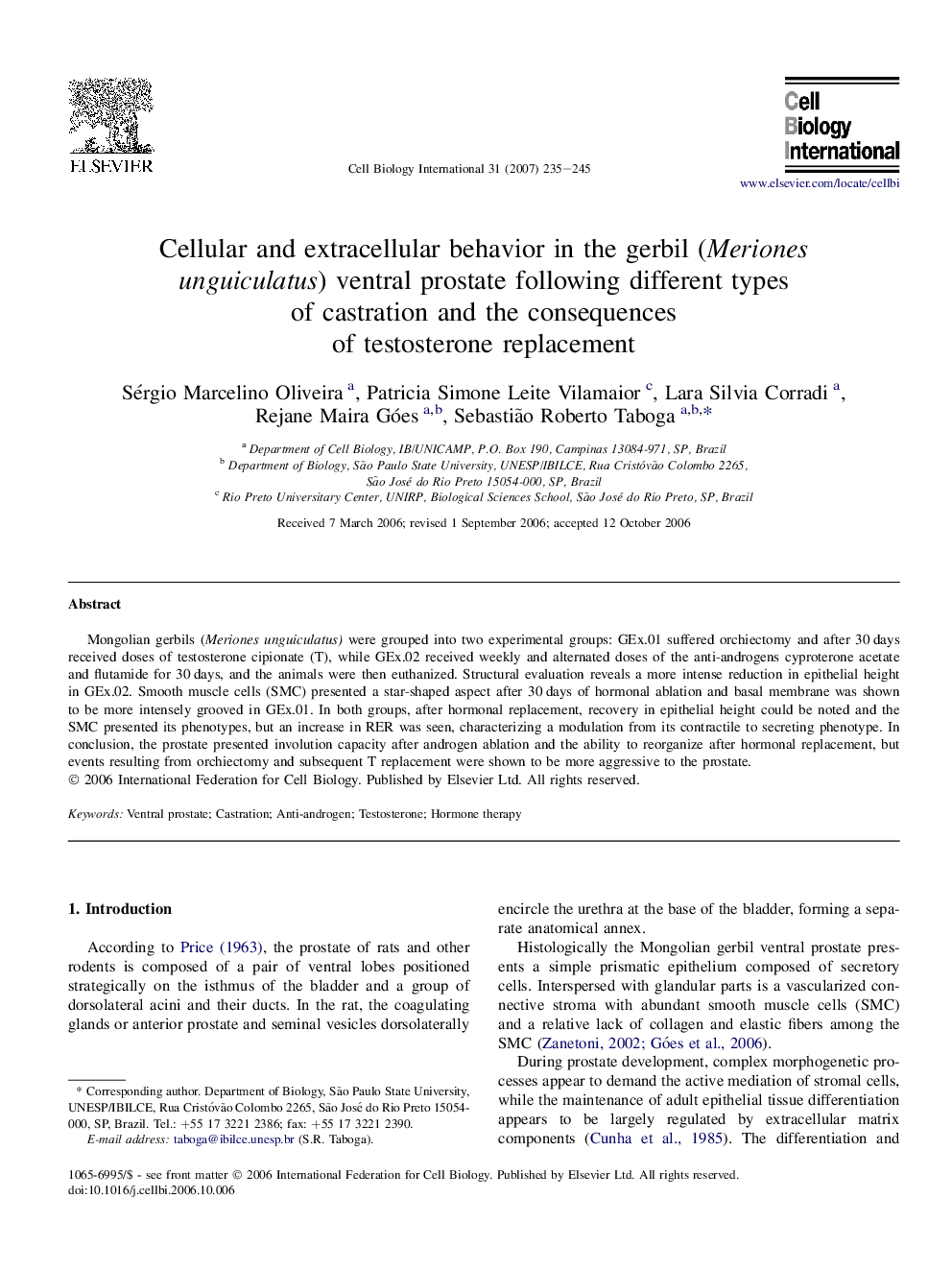| Article ID | Journal | Published Year | Pages | File Type |
|---|---|---|---|---|
| 2067804 | Cell Biology International | 2007 | 11 Pages |
Abstract
Mongolian gerbils (Meriones unguiculatus) were grouped into two experimental groups: GEx.01 suffered orchiectomy and after 30Â days received doses of testosterone cipionate (T), while GEx.02 received weekly and alternated doses of the anti-androgens cyproterone acetate and flutamide for 30Â days, and the animals were then euthanized. Structural evaluation reveals a more intense reduction in epithelial height in GEx.02. Smooth muscle cells (SMC) presented a star-shaped aspect after 30Â days of hormonal ablation and basal membrane was shown to be more intensely grooved in GEx.01. In both groups, after hormonal replacement, recovery in epithelial height could be noted and the SMC presented its phenotypes, but an increase in RER was seen, characterizing a modulation from its contractile to secreting phenotype. In conclusion, the prostate presented involution capacity after androgen ablation and the ability to reorganize after hormonal replacement, but events resulting from orchiectomy and subsequent T replacement were shown to be more aggressive to the prostate.
Related Topics
Life Sciences
Biochemistry, Genetics and Molecular Biology
Biophysics
Authors
Sérgio Marcelino Oliveira, Patricia Simone Leite Vilamaior, Lara Silvia Corradi, Rejane Maira Góes, Sebastião Roberto Taboga,
